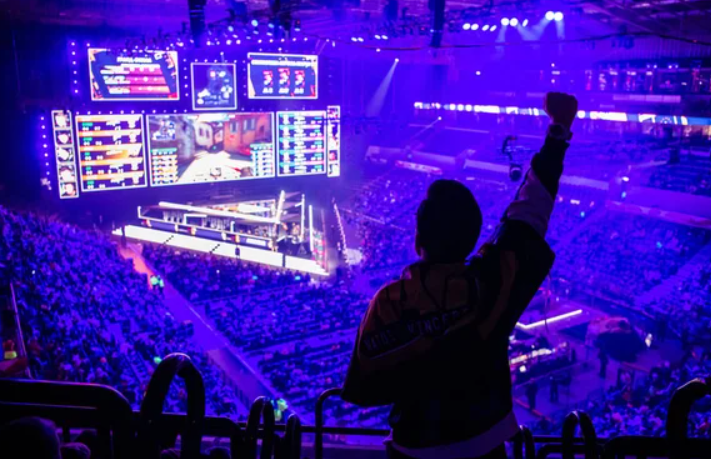eSports Match Fixing Risk — How to Bet Smart on Smaller Leagues
Smaller eSports leagues are often where sharp bettors look for soft lines and early value. But they’re also where manipulation thrives. Lack of oversight, inconsistent rule enforcement, and underpaid players create ideal conditions for match-fixing. If you want to bet on lower-tier tournaments — from CS:GO Tier 3 to regional Dota qualifiers — you need to know what to watch out for. This isn’t about paranoia. It’s about protecting your edge from unseen variables.
Not every upset is suspicious. But when the same team collapses against 6.00 underdogs twice in a week, or when a clear favourite rushes B site five rounds in a row with no adaptation, it’s not just bad play. It might be theatre. Understanding the risk factors allows you to filter genuine upsets from staged chaos.
Key Risk Indicators That Signal Potential Fixing
Sudden extreme line movement hours before low-profile matches. If a team opens at 1.65 and drifts to 2.20 for no public reason — no roster changes, no maps swapped — it’s a red flag. Syndicates often act early, and books follow.
Inconsistent map vetoes or strange side choices. If a team consistently picks against its own historical strength, it may not be incompetence. In CS:GO, if a team with 85% winrate on Ancient avoids it against a much weaker team, the red light goes on.
Frequent technical pauses or “disconnect issues” in convenient spots. Long unexplained delays tend to happen when momentum is swinging, especially in unofficial online tournaments. Sometimes it’s just bad servers. Sometimes it’s stalling.
Repeated late-round collapses. Everyone throws a round occasionally. But if a team gives up four 5v3 advantages in the same series, and it correlates with sudden live line shifts or heavy Over/Under moves — it deserves scrutiny.

Why Fixing Thrives in Small Leagues
Money and visibility. Players earning $300–$500 per month have more to gain from a $1,000 loss than from winning a $1,500 prize pool. With few eyes on them, and almost no anti-fraud enforcement, the risk-to-reward ratio shifts.
Unregulated books. Some offshore books accept large bets on unverified matches. These are often the first to hang lines on Southeast Asian or CIS minor circuits, but also the last to suspend betting when something suspicious happens.
Tournament organisers lack data integrity systems. No match observers, no server demos, no investigative process. This means post-match investigations rarely happen — and when they do, they come months later.
Low-Tier Circuits with Higher Historical Risk (2021–2024 Trends)
| Region | Common Game | Risk Factors | Betting Tip |
| Southeast Asia | Dota 2 | Small prize pools, repeat org rebrands | Use kill handicaps, not moneylines |
| Eastern Europe | CS:GO | Known matchfixing history, poor oversight | Avoid BO1s unless closing line is sharp |
| Latin America | LoL | Fast-moving odds, few observers | Bet totals only when lines are stable |
| Tier 3 EU leagues | CS:GO | Young teams, big steam movements | Stick to live betting, watch maps |
How to Protect Yourself While Still Finding Edge
Never blindly trust opening odds. Smaller leagues are prone to poor initial pricing. Track how the line moves 12–24 hours before game time. If you see steam toward the dog with no public info, don’t follow blindly — observe.
Avoid parlaying small leagues. It’s tempting to stack five minor match favourites for a nice return. But one manipulated game ruins everything. These are the exact environments where unexpected collapses occur — and you’ll have no recourse.
Stick to in-play if you can watch the game. If you’re betting on Southeast Asia Dota and the match has no stream, you’re playing blind. But if you can follow the map yourself, you’ll catch moments where odds overreact to staged fights or sloppy plays.
Use derivative markets, not winner lines. Kill totals, round handicaps, and first-objective markets are harder to manipulate without exposure. A team might throw map two but still win more pistol rounds. Value hides here when the winner line feels “off.”
Track known suspicious rosters and orgs. Some teams rebrand after bans and re-enter the scene. If a team appears under a new org every two months, avoid it. If a banned player resurfaces under a new ID — walk away.
Bet Small, Think Sharp
Lower leagues still offer value. But it’s edge with risk. Treat every Tier 3 matchup as potentially compromised. That doesn’t mean don’t bet — it means you protect yourself first, trust the screen second, and respect what the numbers might not show. In small eSports tournaments, it’s not just about who plays better. It’s about who’s playing for real.



